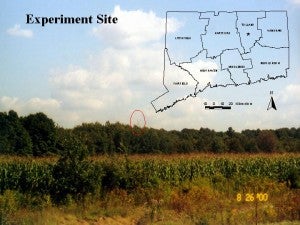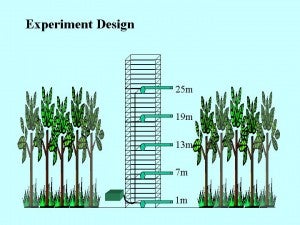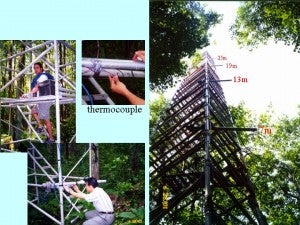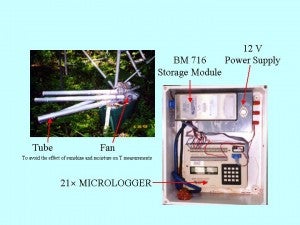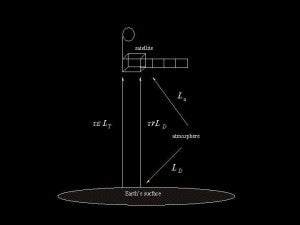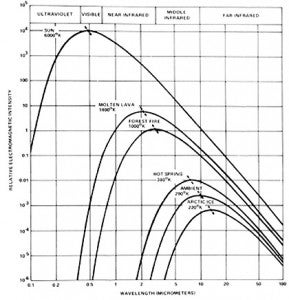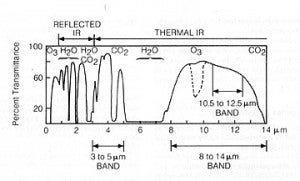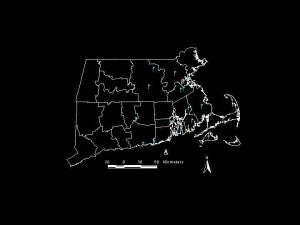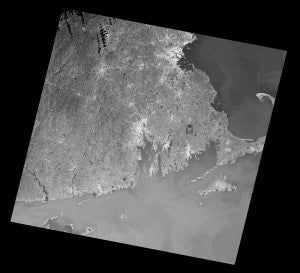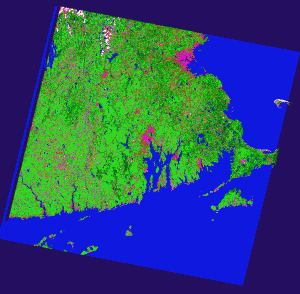The theoretical basis for the remote sensing of LST is that total radiative energy emitted by ground surface increases rapidly with increase in temperature. The spectral distribution of the energy emitted by a ground object also varies with temperature. According to Wien’s Displacement Law (Figure 2) on the relationship between spectral radiance and wavelength, for the Earth with an ambient temperature of 300 K, the peak of its spectral radiance occurs at about 9.6 um. Therefore, theoretically, the thermal energy in relation to the physical temperature of the ground surface can be remotely observed by using sensors operating at wavelength around 10 um, which have been defined as thermal channels in remote sensing systems.
On the other hand, the spectral characteristics of the atmosphere indicates that there is an atmospheric window in the spectral region 8-14 um (Figure 3), where atmospheric absorption is minimum and through which the energy source of ground surface can transmit with least losses. Thus, ground surface temperature can be remotely sensed using the channels within the atmospheric window at the thermal spectral wavelength.
Unlike remote sensing of reflected light from surfaces in which only the topmost layers (a few molecular layers thick) are involved, thermal remote sensing includes energy variations extending to varying shallow depths below the ground surface. This takes time and is the normal consequence of heating during the day and cooling at night. The most critical consideration in analyzing and interpreting thermal data and imagery is that of knowing the physical and temporal conditions that heat the near surface layers. Over the seasons, minor shifts in the mean temperature in bedrock can occur to depths of 10 m (33 ft) or more. Solar radiation and heat transfer from the air significantly heat materials at and immediately below the surface during the day. Temperatures usually drop at night primarily by radiative cooling (maximum radiative cooling occurs under cloudless conditions), accompanied by some conduction and convection. During a single daily (diurnal) cycle, the near surface layers (commonly, unconsolidated soils) experience alternate heating and cooling to depths typically between 50 and 100 cm (20-40 in). The daily mean surface temperature is commonly near the mean air temperature. Observed temperature changes are induced mainly by changes during the diurnal heating cycle, but seasonal differences (averages and range) in temperature and local meteorological conditions also affect the cycle response from day to day.
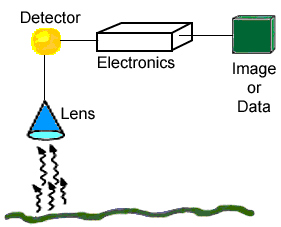
 Home
Home Browse
Browse Close
Close Events
Events Maps
Maps Email
Email Brightspace
Brightspace eCampus
eCampus



